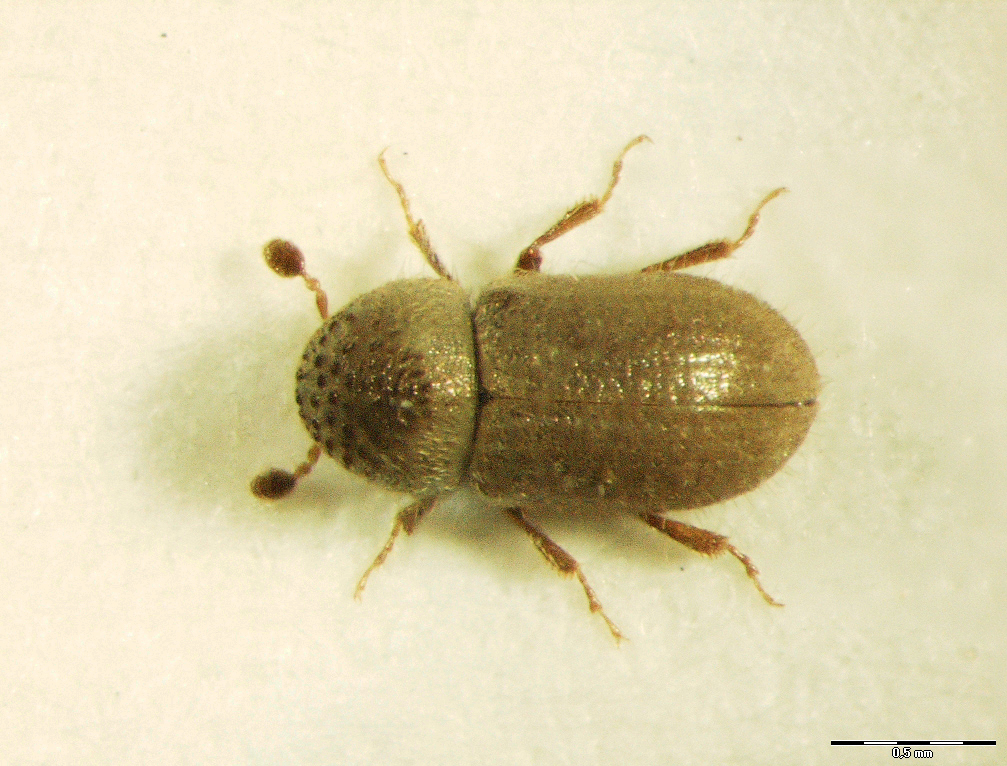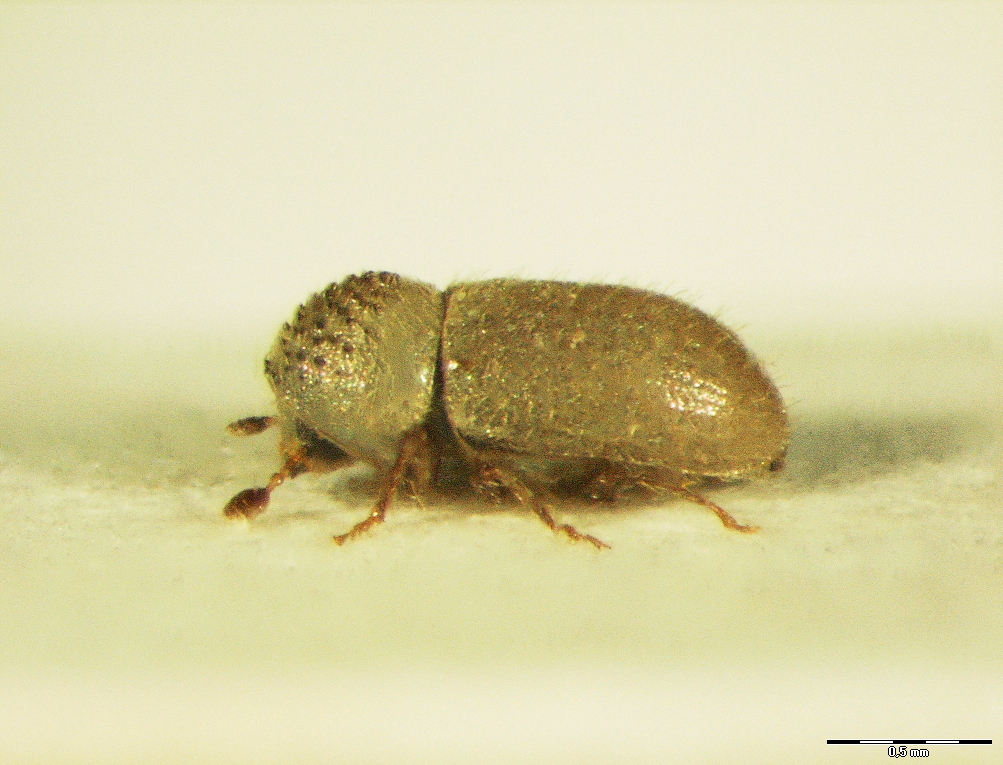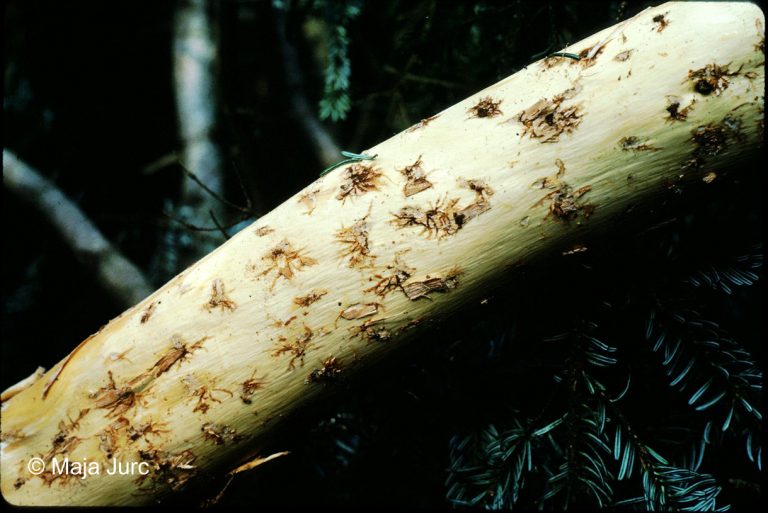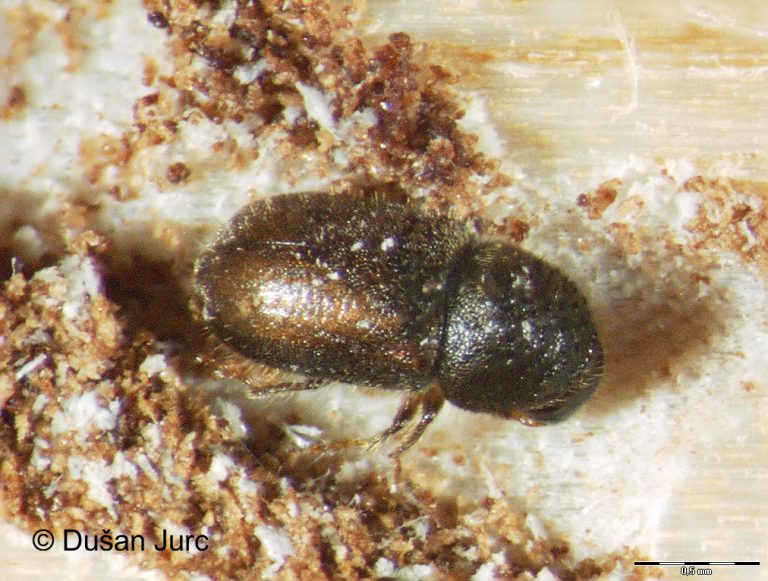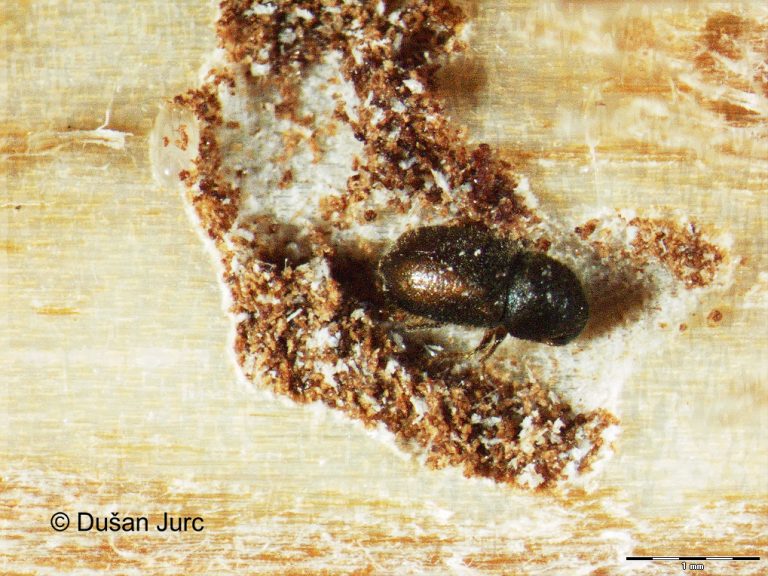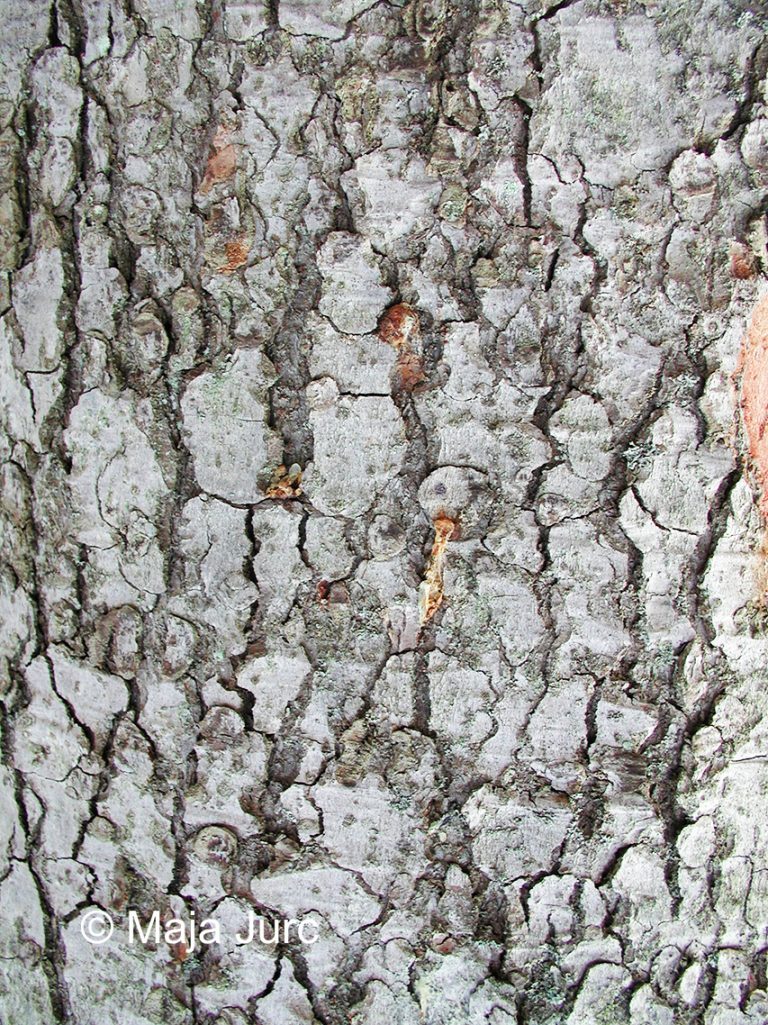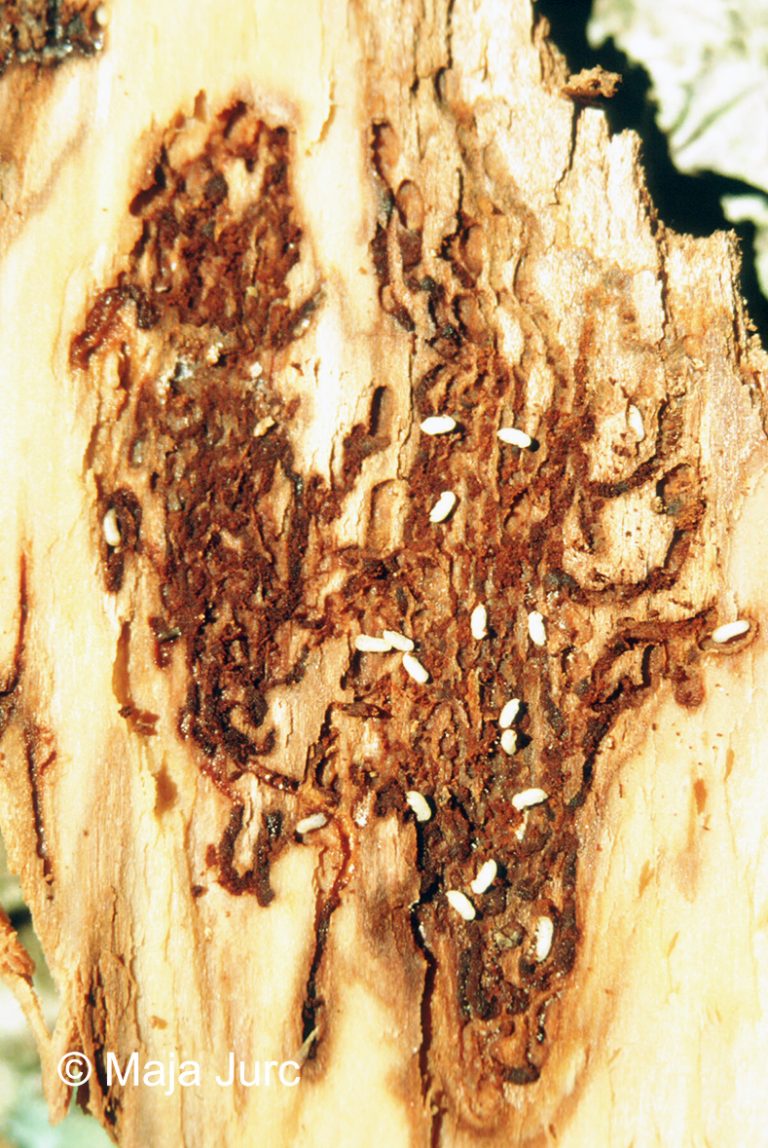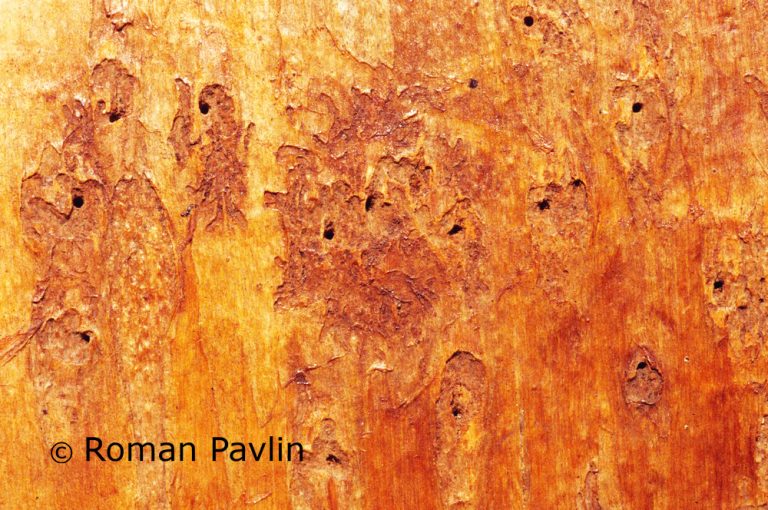19.03. Cryphalus piceae (Ratzeburg, 1837)
Presence
E: AU BH BU BY CR CT CZ FR GE GR HU IT LA LT MC PL RO SK SL SP ST SZ UK YU
N: AG
A: FE JA NC NE SC TR »Manchuria«
Figure 80: Cryphalus piceae, dorsal, lateral (Photo: Maja Jurc)
Older catalogs and keys – citations of name
Grüne 1979: Cryphalus piceae (Ratzeburg, 1837); Freude, Harde, Lohse 1981: Cryphalus piceae Ratzeburg; Titovšek 1988: Cryphalus piceae (Ratzeburg); Pfeffer & Knížek 1993: C. piceae (Ratzeburg, 1837); Pfeffer 1995: C. piceae (Ratzeburg, 1837).
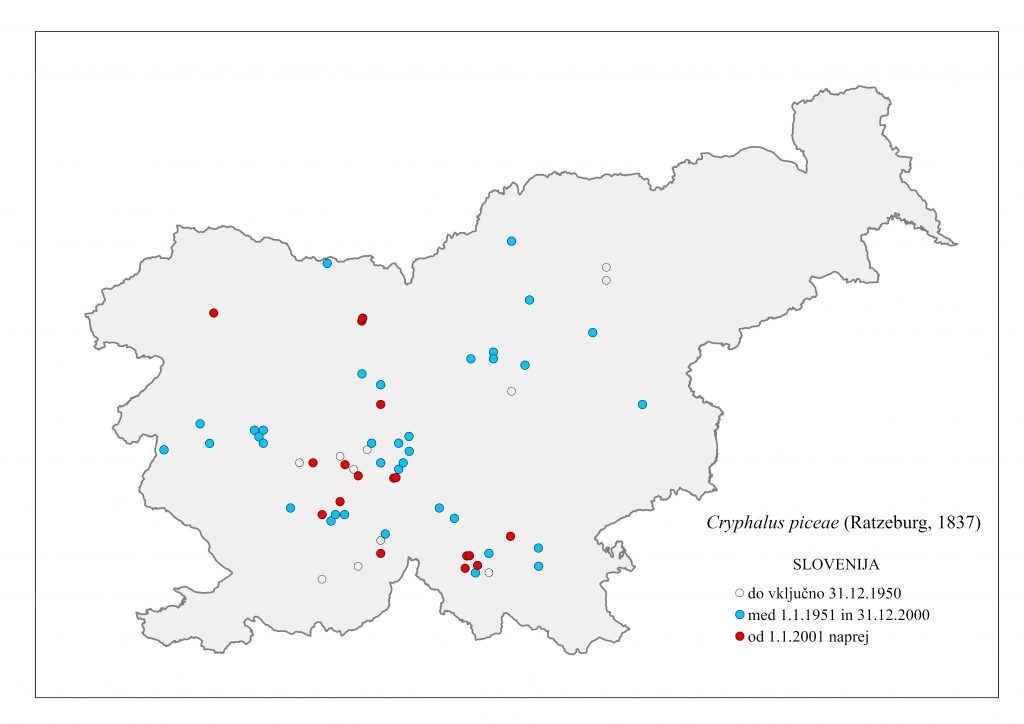
Figure 81: Cryphalus piceae, distribution map according to historical and recent data
Ecology and presence in Slovenia
The species is distributed in central and northern Europe, the Balkan Peninsula, the Caucasus, Asia Minor and North Africa. In Slovenia, C. piceae is relatively common, with only records from Prekmurje, Bela Krajina and the Slovene part of Istria missing (Figure 81). The sites are located in the colline and montane zone, the highest recorded being at 1470 m above sea level (Vodični Vrh, Julian Alps). It lives most often in old fir forests which are in poorer health. Hosts include Abies alba, A. nordmanniana, A. borisii regis, A. cephalonica and A. bornmülleriana, less frequently also Picea abies, Pinus sylvestris, Larix decidua, Thuja spp., and in North Africa Cedrus sp.. In Slovenia the only known host is A. alba. It develops two generations annually, the first swarming in March and April, the second in June. It attacks older trunks and can also colonise small branches and twigs. The tunnel system is quasi (“false”) star-shaped. In autumn, the beetles burrow into the bark of apparently healthy trees, where they overwinter. C. piceae is an economically important species in Slovenia and, together with species of the genus Pityokteines, is a threat to fir forests. Compared to the related species C. asperatus, it is usually lighter, with an adult length of 1.1-1.8 mm (Figure 80).

